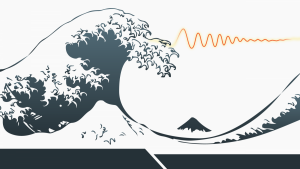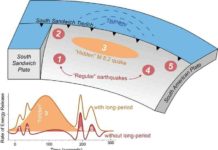
Could electromagnetic fields be used in tsunami early warning? New research shows that important focal parameters of tsunamigenic earthquakes — particularly fault dip direction — can be extracted from tsunami-borne EM fields.
“It’s been five years since we discovered that tsunamis generate EM fields,” says Hiroaki Toh, who led the Kyoto University study. “We’ve now demonstrated that tsunami-generated EM fields are a reliable and useful source of information for seismology,”
Tsunamis consist of large volumes of electrically conductive seawater, generating EM fields through the coupling of synchronous seawater motion with the Earth’s geomagnetic field. In a previous study, Toh’s team found that those tsunami-generated fields revealed information such as the height of the tsunami, its direction of travel, and its type (a rise wave or a backwash).
“This time we aimed to extract information about hypocenters of tsunamigenic earthquakes,” explains Toh.
Knowing the direction in which the fault dips could be helpful for tsunami early warning, as the direction sometimes determines whether a rise wave or a backwash hits a particular costal area.
“With backwash, residents of coastal areas get more time to evacuate. The real disaster is when rise waves come in your direction; you can’t afford to lose a single moment.”
“But fault dips are one of the most difficult characteristics to investigate. Even with modern techniques in seismology, seismic waves don’t always tell us the direction in which the fault is dipping. In these instances, we have to wait for aftershocks to occur and make inferences from them.”
Toh and former graduate student Issei Kawashima analyzed waves from a 2007 tsunami earthquake at the Kuril Trench, off the northeast coast of Hokkaido. With improvements to preexisting methods in calculating tsunamis’ phase velocity, they found that the fault dip lay to the southeast direction.
“EM fields have been measured on the ocean floor of the northwest Pacific since 2001,” says Toh. “This research further proves that EM fields from tsunamis are rich in information that can eventually be applied to global tsunami early warning.”
Reference:
Issei Kawashima, Hiroaki Toh. Tsunami-generated magnetic fields may constrain focal mechanisms of earthquakes. Scientific Reports, 2016; 6: 28603 DOI: 10.1038/srep28603
Note: The above post is reprinted from materials provided by Kyoto University.










